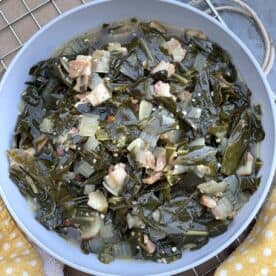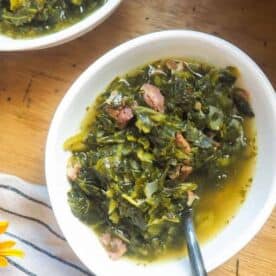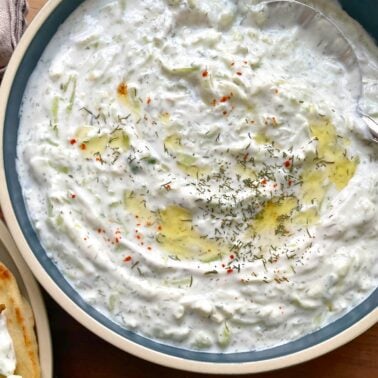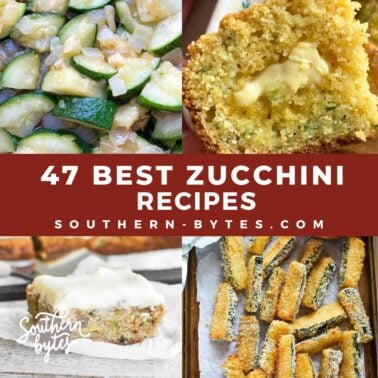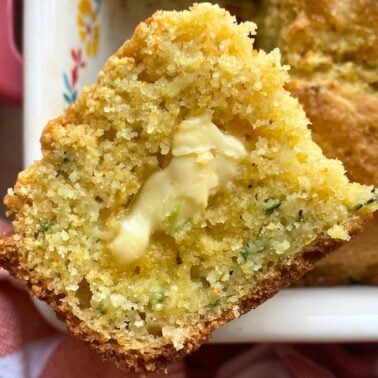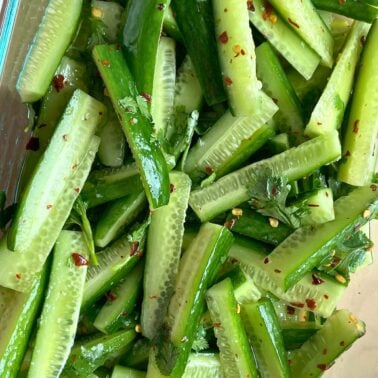Collard greens are a staple in Southern cooking, and here’s everything you need to know about them – from their taste and texture to how to clean and cook them.
What are Collard Greens?
Collard greens are a leafy green vegetable from the brassica family, and they are commonly served with Southern dishes. (This is the same family as broccoli, cauliflower, kale, and cabbage.) Collard greens are known for having large, dark green, tough leaves – similar to kale. You can buy them bagged, by the bunch, or frozen.
Collard greens are often cooked low and slow – southern style – with bacon, ham hocks, smoked turkey, and other types of smoked meats for a long time to tenderize the leaves and infuse them with delicious smokey flavors.
Collard greens are often served as a hearty side dish to traditional Southern dishes like buttermilk fried chicken tenders, black-eyed peas, and Southern cornbread.

Are Collard Greens Healthy?
According to WebMD, greens are loaded with nutrients like vitamin A, vitamin C, Folate, and Calcium. They are also a pretty good source of Vitamin K, Iron, Vitamin B-6, and Magnesium. Collard Greens (like most leafy greens) also contain thiamin, niacin, pantothenic acid, and choline. Medical News Today has more on the nutritional benefits of collard greens.
What Do Collard Greens Taste Like?
Collard greens are slightly bitter when raw, but they have an earthy flavor the is deep and rich when cooked, and they take on the delicious, meaty flavors of what they are cooked in. If you use a ham hock, chicken broth, and cooked bacon – they taste amazing.
Why are they bitter?
Collards have bitter oils that are produced from a naturally occurring sulfur-containing compound, called glucosinolate. (Though there are a lot of health benefits to glucosinolates.) The compound is released when greens are cut, chewed, or cooked. Some people can find greens to be up to 60% more bitter than other people, no matter how they are cooked.
If you find greens to be REALLY bitter, you might just have taste buds that are sensitive to glucosinolate.
How do you remove their bitterness?
To reduce the bitterness, you need to add sweetness, acid, and heat. I add apple cider vinegar, red pepper flakes, sugar, and Tony Chachere’s Creole Seasoning. When serving greens, we add a little bit of pepper vinegar or hot sauce.
How to Choose the Best Collard Greens
If you are buying fresh greens, be sure to check through the leaves to make sure that they do not feel tough or waxy. Greens are best when they are a little bit soft, not too old, and taste best during the coldest months of the year.
Look for any yellowing on the leaves, black spots, or mushy spots as well. Even with pre-cut or bagged collard greens, you should check through them and discard any slimy or spoiling leaves. (Just like you would with a head of lettuce.)
If you grow your own collard greens in containers, they need mild weather for most of their life (under 60°F), then an overnight freeze before you pick them to have the best flavor. They are also really easy to grow, just watch out for caterpillars!
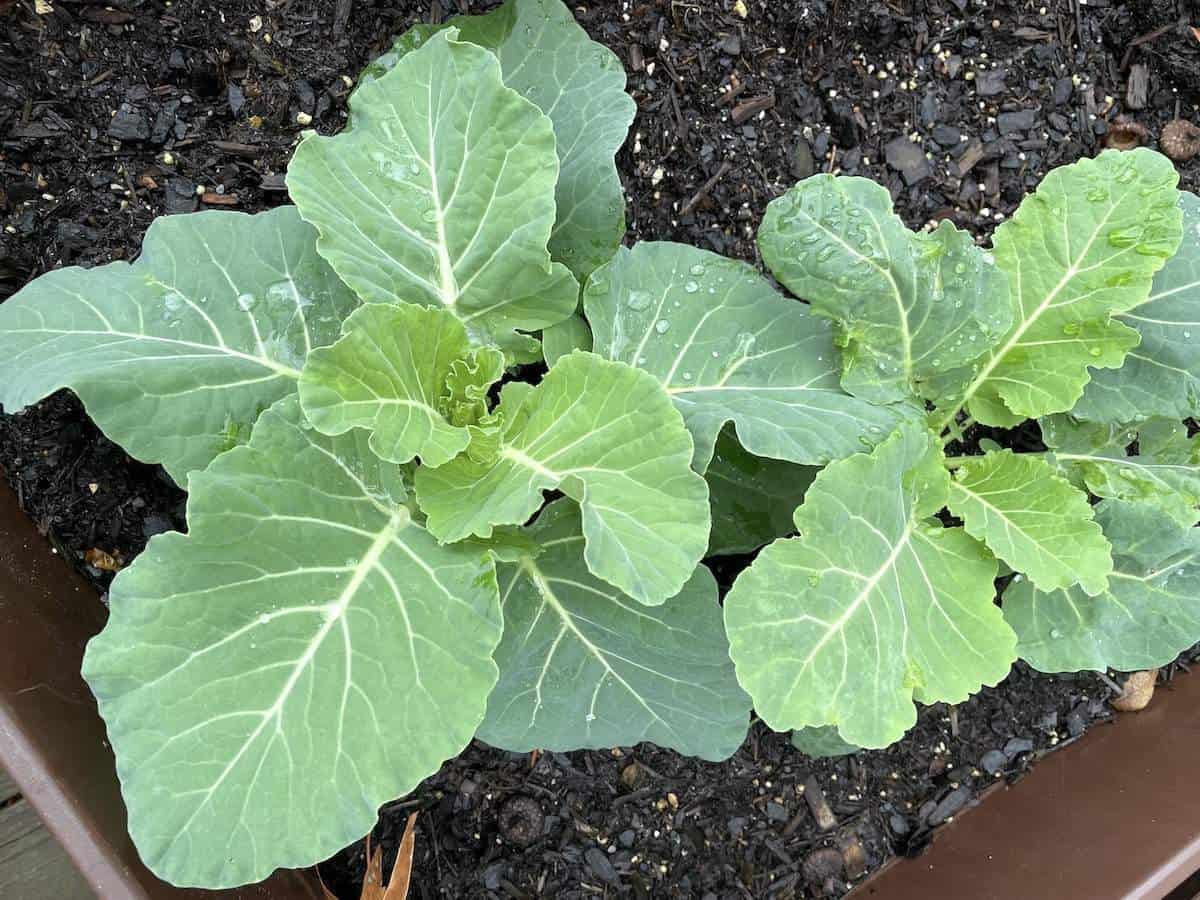
You can also use frozen greens – just dump them right in the pot!
How to Clean Collard Greens
Fresh collard greens do need to be thoroughly washed before you eat them. We grow our own greens, and while we know that they aren’t treated with any pesticides, we also know that birds can poop on them, they get covered in dirt, and they always have bugs on them, no matter how hard we try to avoid them.
You must wash collard greens. (Even if you buy prewashed, cut greens.) Frozen greens can be cooked from frozen and do not need to be washed.
Do the Stems Need to Be Removed?
When cleaning fresh greens, the tough stems need to be removed, and the leafy parts need to be washed. I find it to be easier to remove the stems before washing – there is less to wash once the stems are removed, and without the (sometimes giant) stems, the leaves are easier to fit in a bowl.
I use kitchen shears and cut along the stems, or sometimes just use my fingers and tear along the stems – keep the soft green leaves and discard the woody stems in your compost.
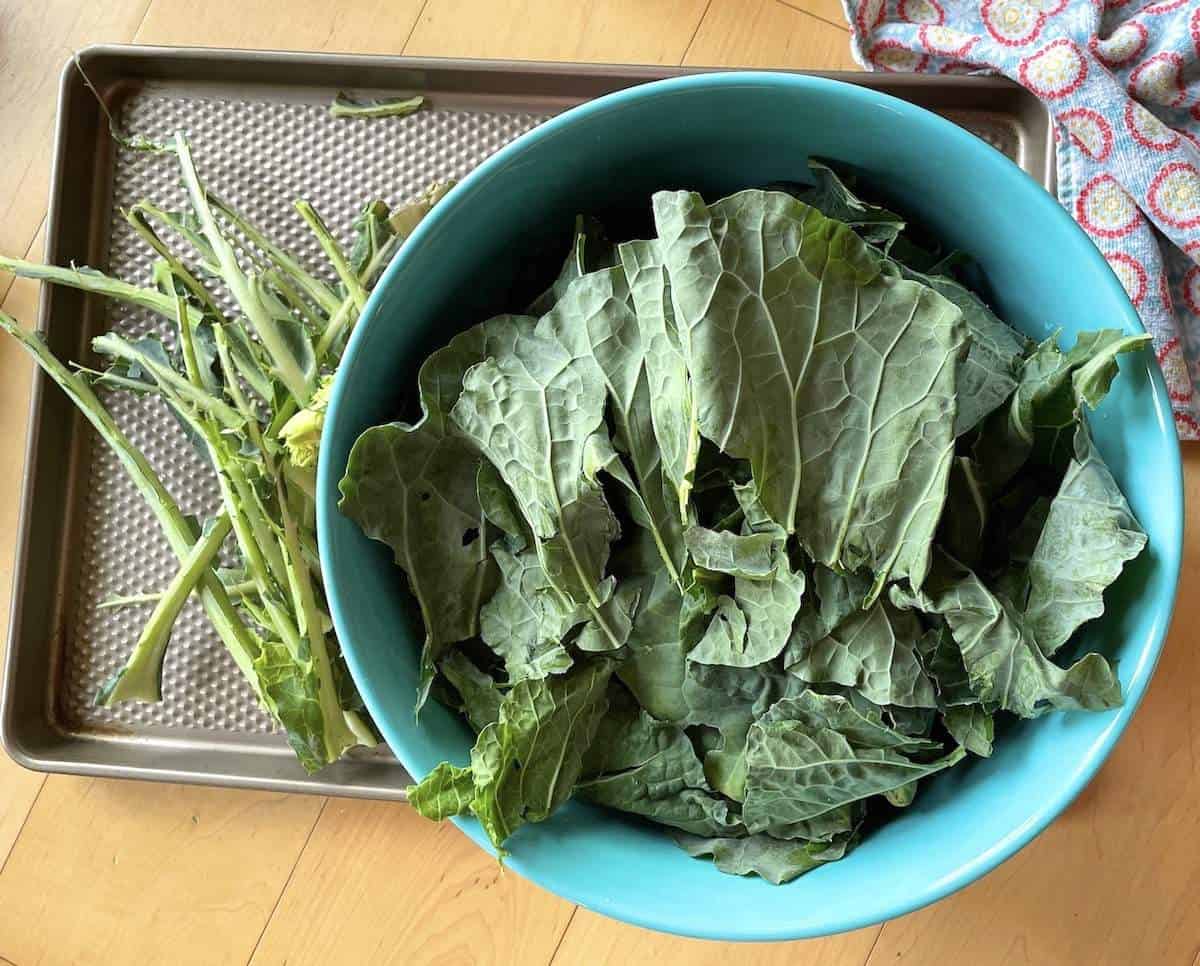
Then, gently chop the collard green leaves into ribbons using a sharp knife or kitchen shears and wash them in cool water several times to be sure that all dirt and sand get rinsed off.
I either use a colander or a salad spinner to rinse and dry the greens. I usually fill a large bowl (or the salad spinner bowl) and dunk the whole strainer in the water with the greens inside of the strainer part, swish them around, lift up the strainer, then pour out the dirty water.
Repeat the process several times, then spin to dry. (A lot of people like to soak their greens in the kitchen sink, but that grosses me out. I feel like something from my 1988 pipes is going to come up through my drain.)

Once washed, pat dry the greens with a towel, then you’re ready to cook them!
If you don’t have time to cook them right away, they will keep in the fridge for a day or two if dried completely, or you can blanch them for just a few seconds and freeze them in blocks in Souper Cubes or small round containers.
Do You Need to Soak Collards?
If you use fresh greens, even precut and washed greens, they should be soaked in tap-cold water for 5-10 minutes and swished around several times to rinse off any dirt or bugs. You might need to do this a few times to get off all the grit.
I like to do this in a salad spinner – just submerge the greens and swish them around, then lift the strainer portion out, rinse again, then put them back in the empty salad spinner, and then spin them to dry them off.
Collard Greens Substitutions
You can substitute turnip greens, broccoli greens, mustard greens, kale, or in a pinch – spinach, swiss chard, or beet greens for collard greens in a recipe.
How to Cook Collard Greens
Greens are best cooked when they are sautéed in bacon. Once the collard greens are cleaned and prepped, I have two delicious collard greens recipes on my site – Southern-Style Collard Greens and Instant Pot Collard Greens. Both are delicious and both have tons of rave reviews!
When eating collards, be sure to dunk some homemade cornbread in the pot liquor.
